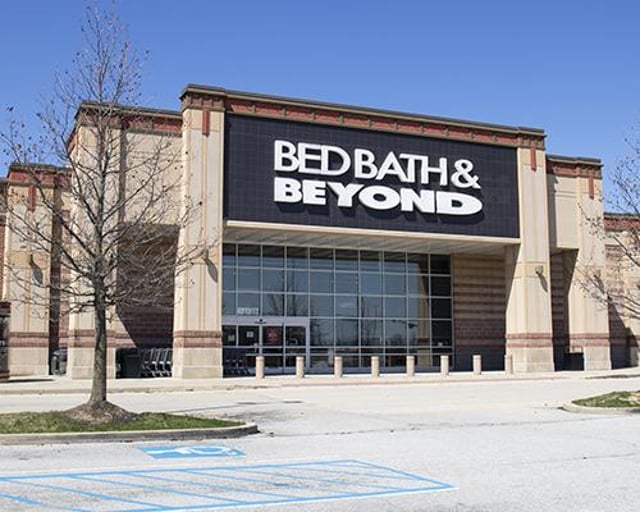Bed Bath & Beyond files Chapter 11 with plans to liquidate unless ...
Bed Bath & Beyond has run out of time.
After closing stores, making job cuts and attempting to raise additional emergency financing, Bed Bath & Beyond Inc. on Sunday filed for Chapter 11 bankruptcy protection. The filing came as no surprise. The 52-year-old home goods chain — one of the original big-box retailers and so-called "category killers"— has been sounding the bankruptcy alarm since January.
In a statement, Bed Bath & Beyond said that it filed for Chapter 11 "to implement an orderly wind down of its businesses while conducting a limited marketing process to solicit interest in one or more sales of some or all of its assets.”
Bed Bath & Beyond will start the process of closing its 360 namesake stores and 120 BuyBuy Baby stores as it looks to sell parts of its business. The company noted in its filing that it has sought to sell itself since last year, to no avail.
The retailer will stop accepting its popular 20%-off coupons on Wednesday when store closing sales begin. It will accept gift cards until May 8.
The company said that it may abandon plans to close stores in the event of a successful purchase agreement. However, it is moving forward with sales of remaining stock, while "strategically managing inventory to preserve value."
Bed Bath & Beyond has received a commitment of approximately $240 million in debtor-in-possession financing from Sixth Street Specialty Lending to provide the necessary liquidity to support operations during the Chapter 11 process. The retailer said it plans to continue to pay employees wages and benefits, maintain customer programs and honor obligations to vendors.
Bed Bath & Beyond, which has found itself challenged to keep its stores stocked with merchandise due to liquidity issues, has been working overtime to avoid bankruptcy since January.
In February, the company said it had completed a stock offering that was expected to bring some $1 billion in equity to the company. But it ultimately only raised $360 million. But in March, the retailer proposed another stock offering of $300 million and warned in a filing that if the new offering did not come off, it would “likely” have to file for bankruptcy protection.
Earlier this month, in one of its last moves, the company entered into a vendor consignment program with ReStore Capital, a Hilco Global company, under which ReStore would purchase up to $120 million — on a revolving basis at any given time — of pre-arranged merchandise from Bed Bath & Beyond’s key suppliers to help boost inventory levels at the retailer’s stores.
"Bed Bath & Beyond’s probable liquidation is due to the company’s ongoing weak operations and cash drain, which would have likely continued even with a lower interest burden after shedding debt in bankruptcy," commented David Silverman, senior director, Fitch. "The company’s limited chances for a turnaround left it unable to find financing sources to support the company on an ongoing basis until sales and cash flow improve."
As to Bed Bath & Beyond's downfall fell from its once mighty perch, industry experts say the chain failed to keep up with competitors such as Target and Amazon, which were quick to tap into prevailing trends. Its stores grew cluttered and messy. And most damaging, the former retail behemoth came late to the party in terms of the rise of online shopping — a mistake that grew in significance when COVID hit.
In addition, the chain was hit with leadership changes. In June 2022, Mark Tritton, the former Target marketing head whose arrival as Bed Bath & Beyond as CEO in November 2019 was hailed by the industry, was ousted by the board after a disastrous first quarter. He sought to reinvent the business with an ambitious multi-year transformation initiative that include updating stores and a big focus on private brands, launching about 10 labels in some two years.
Several other executives left in Tritton’s wake and board member Sue Gove was named interim CEO. In October 2022, Bed Bath & Beyond named her permanent CEO. Gove executed a turnaround plan designed to reverse declining sales, win back customers, recapture market share and restore financial stability. The plan included store closings, job reductions and a pullback from the private label strategy that Tritton had launched, with a third of the company’s owned brands being eliminated.
As to which retailers stand to benefit the most if Bed Bath & Beyond stores go dark, Craig Johnson, president of Customer Growth Partners, pointed to At Home and Home Goods, the home division of TJX Cos., along with Ross Stores and Burlington. Target and Walmart are also likely to gain shoppers.
“Our teams have worked with incredible purpose to support and strengthen our beloved banners, Bed Bath & Beyond and BuyBuy Baby,” stated Gove in a statement regarding the chain’s bankruptcy filing. “We deeply appreciate our associates, customers, partners, and the communities we serve, and we remain steadfastly determined to serve them throughout this process. We will continue working diligently to maximize value for the benefit of all stakeholders."
Based in New Jersey, Bed Bath & Beyond was founded as Bed ‘n Bath by business entrepreneurs Warren Eisenberg and Leonard Feinstein in 1971. The company went public in 1992.
Kirkland & Ellis LLP and Cole Schotz P.C. are serving as legal counsel, Lazard Frères & Co. LLC is serving as investment banker, and AlixPartners LLP is serving as financial advisor. Bed Bath & Beyond Inc. has retained Hilco Merchant Resources LLC to assist with inventory sales.


